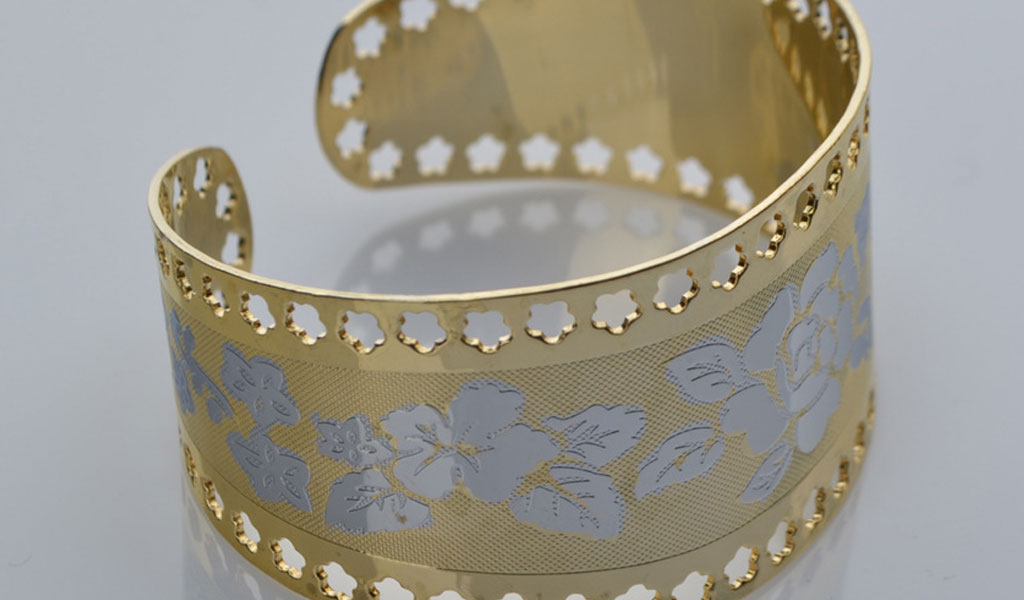Jewelry making is an ancient art form, evolving through the ages to incorporate various techniques and materials. Among these, photo etching stands out as a unique method that combines traditional craftsmanship with modern technology.
This article delves into the intricate world of photo etching for jewelry, exploring its history, processes, materials, and applications, as well as offering insights into how you can start creating your own photo-etched jewelry pieces.
The History of Photo Etching in Jewelry Making
Photo etching, also known as photochemical machining or photochemical milling, has roots dating back to the early 19th century. Originally developed for industrial applications such as creating precision parts for machinery, the technique gradually found its way into the world of art and jewelry. The ability to produce highly detailed and intricate designs made photo etching a valuable tool for jewelers seeking to push the boundaries of traditional metalworking.
The Process of Photo Etching
Step 1: Design Preparation
The first step in photo etching is creating a detailed design. This can be done using various graphic design software programs like Adobe Illustrator or CorelDRAW. The design is then printed onto a transparent film, which will serve as a mask for the etching process.
Step 2: Preparing the Metal
The metal sheet, typically brass, copper, or silver, is thoroughly cleaned to remove any oils or contaminants that could affect the etching process. A photoresist, a light-sensitive material, is then applied to the metal surface. This can be done through a dip coating process or by laminating a photoresist film onto the metal.
Step 3: Exposure
The metal sheet coated with photoresist is placed under the transparent film with the design. This assembly is then exposed to ultraviolet (UV) light. The UV light hardens the photoresist in the areas exposed through the transparent parts of the film, creating a stencil of the design on the metal surface.
Step 4: Developing
The exposed metal sheet is developed in a solution that removes the unexposed photoresist, revealing the bare metal in areas that will be etched. This step requires precision to ensure that only the desired parts of the metal are exposed for etching.
Step 5: Etching
The metal sheet is then immersed in an etching solution, usually a ferric chloride or acid-based solution. The exposed areas of the metal are dissolved away, leaving behind the intricate design protected by the hardened photoresist. The depth and detail of the etching can be controlled by the duration and concentration of the etching solution.
Step 6: Cleaning and Finishing
After etching, the remaining photoresist is removed, revealing the final etched design. The metal is then cleaned and polished. Additional finishing processes, such as plating, enameling, or setting stones, can be applied to enhance the jewelry piece.
Materials Used in Photo Etching
Photo etching can be performed on a variety of metals, each offering unique properties and aesthetics. Common metals used include:
- Brass: Known for its warm, golden hue, brass is a popular choice for its malleability and affordability.
- Copper: With its distinctive reddish-brown color, copper offers excellent conductivity and is easy to work with.
- Silver: Precious and lustrous, silver is valued for its beauty and workability, making it ideal for fine jewelry.
- Gold: Though less common due to cost, gold can also be etched for luxurious and high-end jewelry pieces.
Applications of Photo Etching in Jewelry
Photo etching allows for the creation of intricate patterns, textures, and detailed designs that would be challenging to achieve through traditional methods. Common applications include:
- Custom Pendants: Photo etching can produce detailed pendants with personalized designs, names, or images.
- Earrings: Lightweight and delicate, photo-etched earrings can feature complex patterns that stand out.
- Bracelets and Cuffs: The technique allows for continuous patterns to be etched around a metal band, creating unique wristwear.
- Rings: Intricate designs can be etched onto the surface of rings, adding a personalized touch.
- Brooches and Pins: Detailed and lightweight, photo-etched brooches and pins can feature elaborate designs suitable for various occasions.
Advantages of Photo Etching in Jewelry Making
Photo etching offers several advantages over traditional jewelry-making techniques:
- Precision and Detail: The process allows for extremely fine and intricate designs that would be difficult to achieve by hand.
- Consistency: Photo etching can produce multiple identical pieces, making it ideal for production runs.
- Versatility: The technique can be used on various metals and is suitable for a wide range of jewelry types.
- Efficiency: Once the design is prepared, the etching process is relatively quick, allowing for efficient production.
Getting Started with Photo Etching for Jewelry
If you are interested in exploring photo etching for jewelry making, here are some steps to get you started:
Gather Supplies
You will need the following materials and equipment:
- Metal sheets (brass, copper, silver, etc.)
- Photoresist (liquid or film)
- Transparent film for design
- UV light source
- Etching solution (ferric chloride or acid-based)
- Developing solution
- Cleaning and polishing supplies
Learn the Technique
Start by researching and learning the basics of photo etching. There are numerous online tutorials, courses, and books available that provide detailed instructions and tips.
Practice
Begin with simple designs to get a feel for the process. As you gain confidence and experience, you can experiment with more complex and detailed designs.
Safety First
Always prioritize safety when working with chemicals and UV light. Wear protective gear, work in a well-ventilated area, and follow all safety guidelines for handling and disposing of chemicals.
Conclusion
Photo etching is a fascinating and versatile technique that opens up new possibilities for jewelry design and creation. By combining traditional metalworking skills with modern technology, jewelers can produce intricate and unique pieces that captivate and inspire. Whether you are a seasoned jeweler looking to expand your repertoire or a beginner eager to explore a new craft, photo etching offers a rewarding and creative avenue to express your artistic vision.
